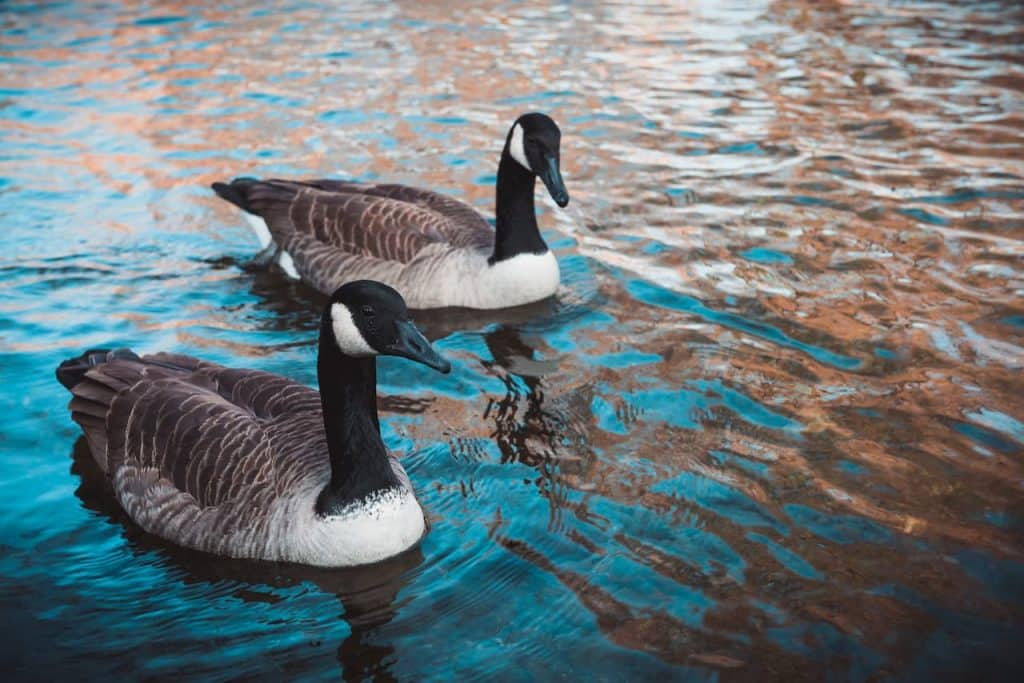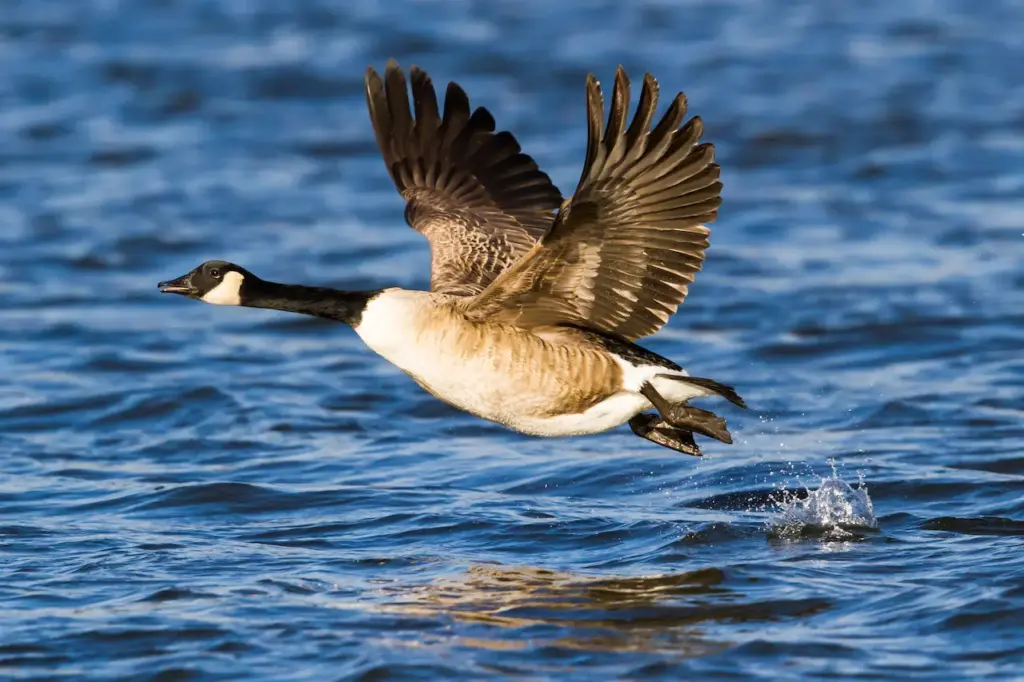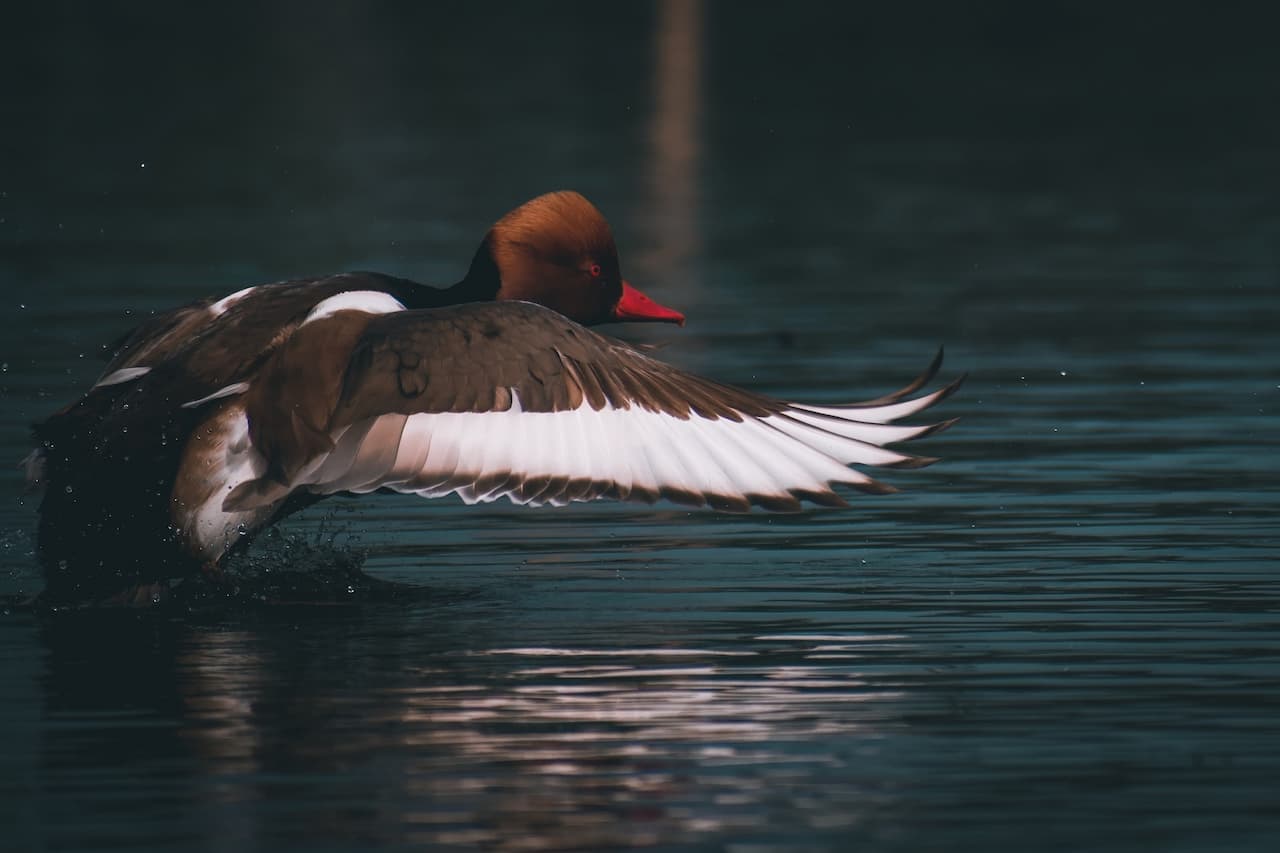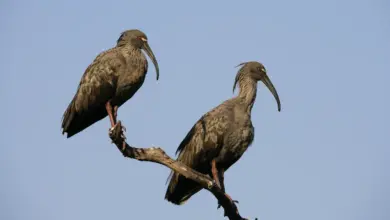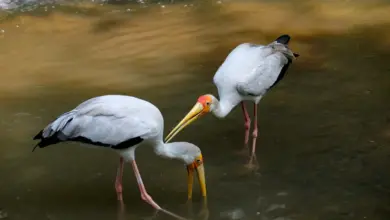In the past, the Cackling Goose was considered to be either the same species (conspecific) or a subspecies of the Canada Goose. In July 2004, the American Ornithologists’ Union’s Committee split them up into two separate species based on genetic studies and differences in size, voice, and breeding habitat: the larger-bodied Canada Goose and the smaller-bodied Cackling Goose.
Canada Geese are darker in plumage as we go westward, and smaller in size as we move northward.
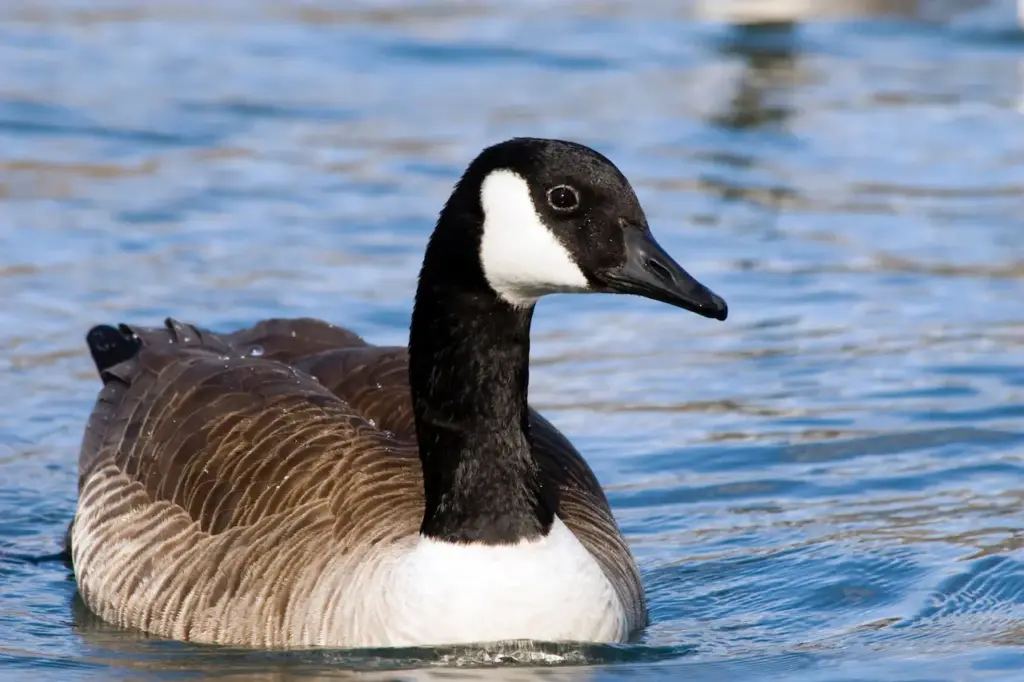
- Atlantic Canada Goose (Branta canadensis canadensis – Linnaeus, 1758) – Nominate Race
- ID: Large goose with medium grey chest, black neck and front of head, white cheek patches. Males and females look alike.
- Range:
- Winter: Along the east coast of the United States, down to North Carolina. Breed in Eastern Labrador, Newfoundland, Anticosti, and Magdalen Islands, Canada.
- Nesting: Most breeding occurs between April to June. The nest is placed in grass near water in a slightly elevation location. It is guarded by both the male and the female prior to nesting and by the male alone once nesting has begun. The average clutch consists of 4 – 6 eggs. The young fledge (are independent) when they are about 26 – 28 days old.
Interior Canada Goose, Hudson Bay Canada Goose, or Todd’s Goose (Branta canadensis interior – Todd, 1938)- ID: Large goose with medium grey breast, black neck and front of head, white cheek patches. Males and females look alike.
- Range:
- Winter: Southern Canada south to Florida and Louisiana, USA.Breed in Northern Quebec, Ontario and eastern Manitoba and southern Hudson Bay (Canada).
- Nesting: Most breeding occurs between April to June. The nest is placed in grass near water on a slightly elevation location. It is guarded by both the male and the female prior to nesting and by male alone once nesting has begun. The average clutch consists of 4 – 6 eggs. The young fledge (are independent) when they are about 28 days old.
- Dusky Canada Goose (Branta canadensis occidentalis – Baird, 1858)
- ID: Medium goose with very dark grey breast, black neck and front of head; and white cheek patches. Males and females look alike.
- Range:
- Winter: Oregon, northern USA. Regular visitor to Washington State.Breed in Prince William Sound, Cook Inlet to Copper River Delta in southwestern Alaska.
- Nesting: Most breeding occurs between April to June. The nest is placed in grass near water on a slightly elevation location. It is guarded by both the male and the female prior to nesting and by male alone once nesting has begun. The average clutch consists of 4 – 6 eggs. The young fledge (are independent) when they are about 26 – 28 days old.
Two Canada Goose Floating In The Lake
- Vancouver Canada Goose (Branta canadensis fulva – Delacour, 1951)
- Range: Breeds along coastal southeastern Alaska, south through northern British Colombia, Canada. This race is mostly sedentary (non-migratory), with only about 2% of the population actually migrating (Ratti and Timm, 1979). Those that do migrate travel south to northern USA for the winter. A regular visitor to Washington State.
- Moffitt Canada Goose (Branta canadensis moffitti – Aldrich, 1946)
- Range: Great Basin of Canada. Winter visitor and year-round resident in Washington State, USA.
- Giant Canada Goose (Branta canadensis maxima – Delacour, 1951)
- History: In the 1950s, this subspecies was considered extinct. However, in 1962, a small flock was discovered wintering in Rochester, Minnesota, by Harold Hanson of the Illinois Natural History Survey. Following this discovery, intense measures to reintroduce this species in large parts of its former range were successfully implemented. In 2005, its population was estimated to exceed 1.5 million birds (Mowbray et al., 2002; US Fish and Wildlife Service, 2005).
- ID: The largest of all subspecies. Has a light grey chest, black neck and front of the head, white cheek patches, and a white spot on the black of the head-front. Males and females look alike.
- Range: Coastal western Alaska east to central Manitoba, south to northern United States, south to Mississippi. Northern populations migrate south from their breeding territories to Tennessee and Mississippi Valley for the winter. Southern populations are sedentary (non-migratory). It has been recorded as far west as Washington State as a rare winter visitor.
- Nesting: Most breeding occurs between April to June. The nest is placed in grass near water in a slightly elevation location. It is guarded by both the male and the female prior to nesting and by the male alone once nesting has begun. The average clutch consists of 4 – 6 eggs. The young fledge (are independent) when they are about 26 – 28 days old.
Canada Goose in Flight Above Water
Disputed or Modified Subspecies Status:
- Lesser Canada Goose (Branta canadensis parvipes – Cassin, 1852)
- Disputed subspecies: might be partly hybrid population.
- ID: Medium-size goose with a medium grey breast, black neck and front of the head, and white cheek patches. Males and females look alike.
- Range:
- Winter: Spend the winters in the northern USA south to California east to Louisiana and through to Mexico. A regular (non-breeding) visitor to Washington State.Breeding: Central Alaska eastward to Hudson Bay, Canada, and south to Prairie Provinces in western Canada.
- Nesting: Most breeding occurs between April to June. The nest is placed in grass near water in a slightly elevation location. It is guarded by both the male and the female prior to nesting and by the male alone once nesting has begun. The average clutch consists of 4 – 6 eggs. The young fledge (are independent) when they are about 25 – 28 days old.
The above races (canadensis, interior, maxima, moffitti, parvipes, fulva and occidentalis) are collectively named Greater Canada Goose by BOURC (June 2005)
What was formerly classified as the smallest race of the Canada Goose, the Cackling Goose has now been separated. Please refer to: Cackling Goose Species

